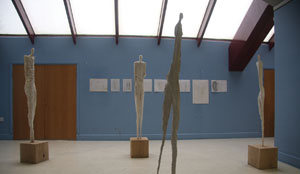Following the closure of Creative Partnerships, Martin Heaney looks to new collaborative projects run by artists, to examine the legacy of its practice

Fourteen Arts Council Bridge organisations become operational this month. They will build on the legacy of the Creative Partnerships programme (CP), which aimed to increase creativity across the school curriculum, in order to “ensure that knowledge and existing networks are not lost”.
Before closing in 2011, CP produced many reports illustrating the positive impact its programmes had: the generation of an estimated net economic benefit of just under £4bn*; pupils who attended CP activities made an average, equivalent 2.5 grades better progress at GCSE than those who didn’t**. In contrast, the impacts of CP on the practice of artists and CP Creative Agents remain relatively unexplored. One way to revive a discussion around this area of its legacy is to analyse new projects that artists are leading, in the absence of centralised funding and support.
A recent collaboration between former Creative Agent colleagues (at Royal Opera House Creative Partnerships), poet Vicky Wilson and sculptor Alex McIntyre offers one example of artists initiating partnership projects. From November 2011 to January 2012 at Brent Museum, they produced an exhibition, ‘Our Place/Your Place’, and used it as stimulus for conversations and creative workshops with members of the local community. Poetry and sculptures were juxtaposed with interactive stations to facilitate the sharing of stories related to Brent: issues important to the community; peoples’ hopes, dreams, fears and aspirations. Results were used to generate new work over the course of the exhibition. The Museum co-ordinator recorded return visits and a higher than average footfall, and the exhibition was extended by a month. An informal ‘mingle’ attended by other former Creative Agents was also held in the space, and resulted in Alex setting up HertsCreation, a new artist-led creative learning partnership to be based in Stevenage.
For Vicky, the source of this innovation is clear. “Taking a risk”, she argues, “is the attitude we tried to instill into the children. Creative Partnerships has inspired me to take up more opportunities including ‘crowdsourcing’ for comments.” This led to a collaborative performance called Daughters, with other poets, a musician and dancer.
Similarly, Alex is taking CP approaches into other professional contexts: inviting the public to ‘make their mark’ in a collaborative drawing exhibition with Greenwich and Lewisham Young People’s Theatre.
These examples illustrate the positive legacy of CP practice both socially, as a forum for engaging audiences and public debate, and artistically, as a catalyst for shaping new collaborations and social engagement. In my view, the speed of CP closure has militated against a full study or impact analysis of the programme. However, the launch of the Bridge organisations presents a significant opportunity for policy-makers to re-engage with artists and to reflect on how their innovative practice has survived and can flourish in new settings.
Martin Heaney is a freelance producer, academic and researcher. E martinh.1@btopenworld.com Tw @MartinTHeaney *PriceWaterhouseCooper, 2010 **National Foundation for Educational Research, 2008



